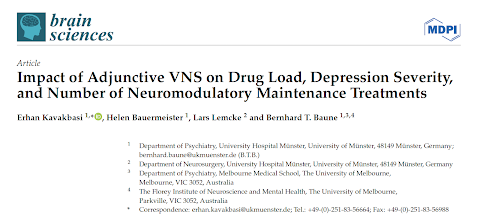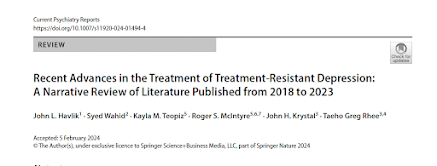ECT, Serum Electrolytes and Seizure Quality: New Data From Germany, in JECT

Out on PubMed, from investigators in Germany, is this study: No Effect of Serum Electrolyte Levels on Electroconvulsive Therapy Seizure Quality Parameters. Karl S, Sartorius A, Aksay SS. J ECT. 2024 Mar 1;40(1):47-50. doi: 10.1097/YCT.0000000000000966. PMID: 38411578 The abstract is copied below: Introduction: Seizure quality is considered to be associated with treatment outcomes of electroconvulsive therapy (ECT). A wide range of treatment parameters and patient characteristics are known to influence seizure quality. However, conflicting results exist for the role of serum electrolyte levels and seizure quality. Methods: We retrospectively analyzed a total of 454 patients and a total of 2119 individual acute ECT sessions irrespective of diagnosis where a clinical evaluation of serum levels of sodium, potassium, and calcium took place routinely up to 2 days before the ECT session. To assess the impact of serum electrolyte levels on seizure quality parameters, we used mixed-effects lin







